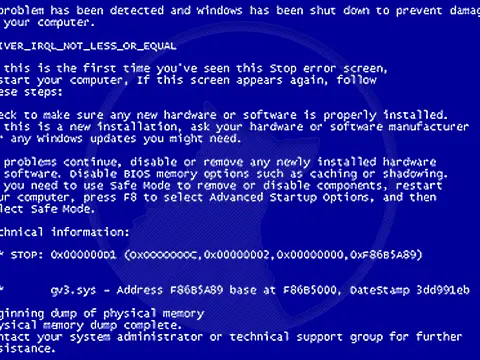Have You Tried Turning It Off and On Again? How To Fix (Almost) AnythingHave you ever asked your IT support department to fix a problem and they ask "Have you tried turning it off and on?", This is why.
At first, this may seem like a flippant response, but often rebooting a computer can solve many problems. Why does turning a device off and on again fix so many problems? In addition, why don't they try to identify and fix problems rather than the usual response of "Have You Tried Turning it Off and On Again?"
This applies to everything from Windows computers, Apple Mac and Linux computers to wireless routers, iPads, Android phones, and more.
To illustrate why rebooting a Windows computer can fix so many problems, let us look at the classic problem of a Windows computer - the dreaded blue screen of death.
The blue screen is a message that shows when Windows encounters a low-level error, most likely a problem with a hardware driver or a hardware malfunction. Windows has reached a state where it does not know how to recover, so it halts everything, shows a blue screen and automatically restarts the computer.
In this instance, Windows was unable to fix the cause of the error itself. By restarting the computer, the code can start from square one and should not encounter the same problem again.
More Problems Solved by Turning it Off and On
When Windows is running slow, the most likely cause is a program consuming excessive system resources. Everything you do on a computer, from browsing the internet or writing a document through to gaming and photo editing creates thousands of processes and hundreds of memory locations being used. When programs are closed most of the time these are cleared up, but often some are left, orphaned from their process and unable to be used. This reduces the available memory and resources available to other programs. Restarting the computer forces all these memory locations to be cleared resulting in a clean slate from which these orphaned memory locations can now be used again.
If you have a problem with your Internet or Wi-Fi Network, the software on your router or modem may have encountered a problem similar to a Windows blue screen. Resetting the router - pressing the reset button or unplugging the power supply - is a common solution for connection problems as it clears all the memory and resources and the software can start again from square one.
Ultimately, the answer is that resetting a computer wipes away the current state of the software, including any problems that have developed, and allows it to start over from square one. It is quicker, easier and faster to start from a clean slate than it is to identify and fix any problems that may be occurring - in fact, in some cases, it may be impossible to fix problems without beginning from that clean state.
Restarting works on other devices too. From smart TVs, smartphones, routers, DVD players, and digital cameras. They all have tiny operating systems and software that run into the same issues that your computer does. Turning it off and on is s simple way to clear any corrupt memory, restore settings and start from a clean slate.











